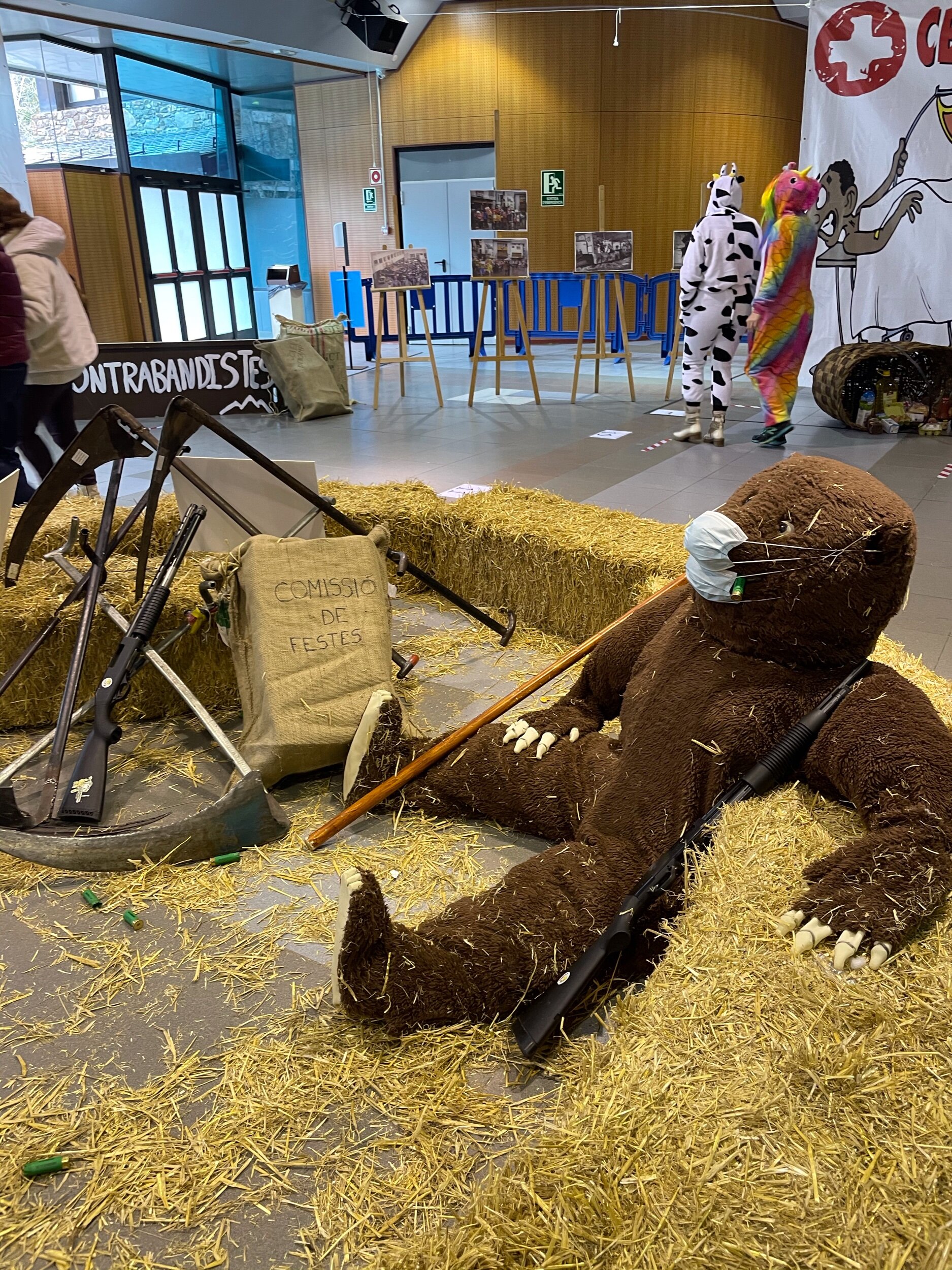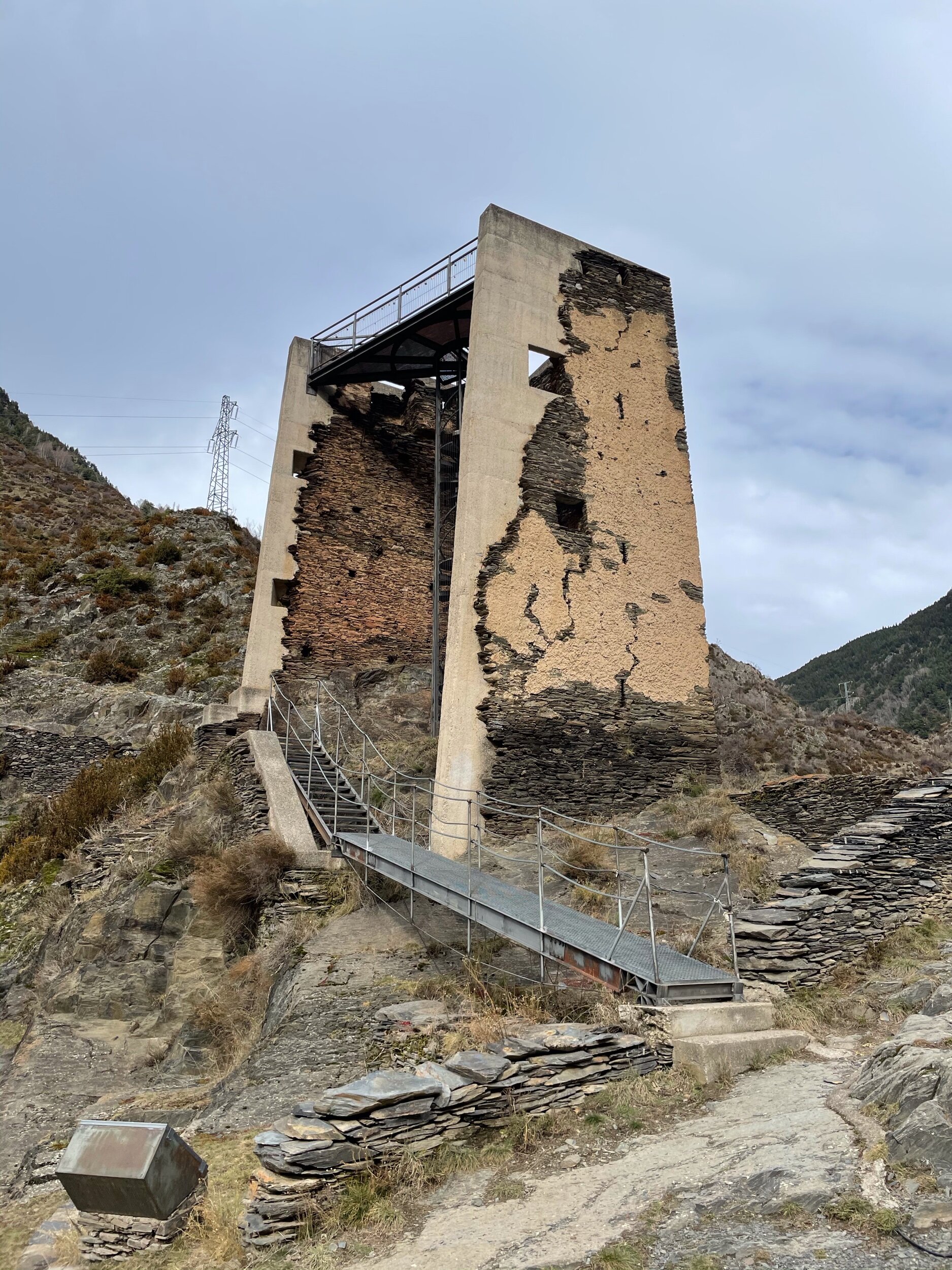Culture, Carnaval, Churches in Encamp
Parish-A-Day, Day 1: Encamp
View of the valley from Les Bons in Encamp.
Culture & Carnaval
We started off our day with a beautiful adaptation of the Bear Dance (Ball de l'Óssa d'Encamp). The Bear Dance has been declared an essential part of Andorra’s cultural heritage and has likely been around since the Middle Ages. The star of the show, the Bear, also happened to be one of my fellow Fulbrighter’s school directors, the school director of Santa Coloma Secondary school.
Dancing bear
After the Bear Dance, which was a family-friendly event, with many small children in costumes in attendance, they showed a video montage of Carnaval d’Encamp’s pasts, since this year they can’t due to the pandemic. On Encamp’s website, Carnaval is described as an uninterrupted party for four days, characterized by debauchery and satire, where they follow the motto, “For Carnaval, anything goes”.
The four days of Carnaval, pre-pandemic, typically include:
The Hanging of His Majesty of Carnaval at noon on Saturday. This day features prominent political and social satire. From what we saw in the video, the streets are transformed into a war zone with men riding around on jeeps, carrying (fake?) AK47, shooting blanks, and lighting things on fire. There were also people making suggestive movements. The Hanging ceremony ends with young people singing under the King and the Esbart Sant Romà dances are performed afterwards.
The Judgement of the Smugglers, a tradition since the late 19th century. Young men dress up as smugglers and descend from the mountain, run through the streets of Encamp, and are chased by Spanish police. When they are caught, they are tried in Andorran court but eventually acquitted.
The Bear Dance. It’s a play where hunters kill a bear :(
The Operation of Carnaval, where the King of Carnaval is retrieved and they attempt to resuscitate him. They fail to do so, he dies, and so do the Carnaval festivities along with him.
As a foreigner, I was quite startled by much of this “debauchery” and “anything goes” attitude. In American culture in this day and age, this definitely wouldn’t go. The video depicted what to me looked more like a war zone than a carnival. I think the satirical violence creates desensitization to violence; also, I doubt countries who had experience such violence as was re-enacted would ever find it funny to recreate. I was also shocked by what in the United States we would definitely call out as cultural appropriation—people dressed up as Native Americans, Mexicans, and more—and I even saw a young girl in black face. Like in many places that lack the ethnic, racial, and cultural diversity of the U.S., there seems to be a lack of awareness and sensitivity to cultural appropriation and problematic depictions of other cultures. I am curious to see if in future decades this changes or if it will remained ingrained in the culture and traditions of Encamp’s Carnaval.
Conjunto Historico de Les Bons
After the fascinating cultural display of Carnaval, we walked along the river towards the historic village of Les Bons.
Exploring Les Bons takes you back to what Andorra might have looked like in Medieval times. Many of the buildings date back to the 1100s. Les Bons is strategically at the top of the hill to control the entrance to the valley. It includes a four story defense tower dating back to the 13th century and the church of Santa Roma dating back to the 16th century.
































